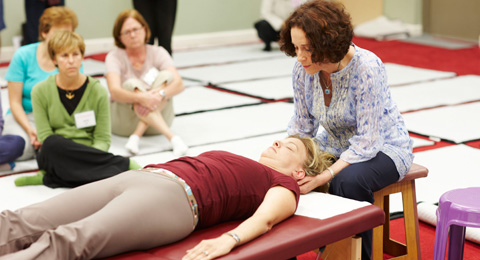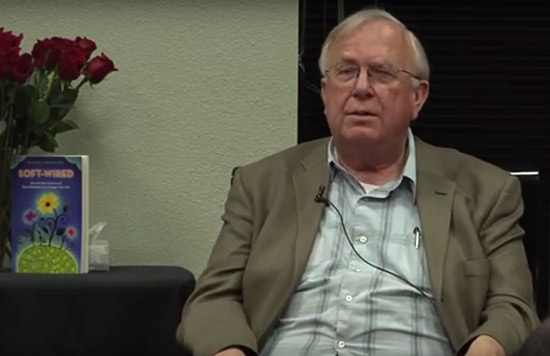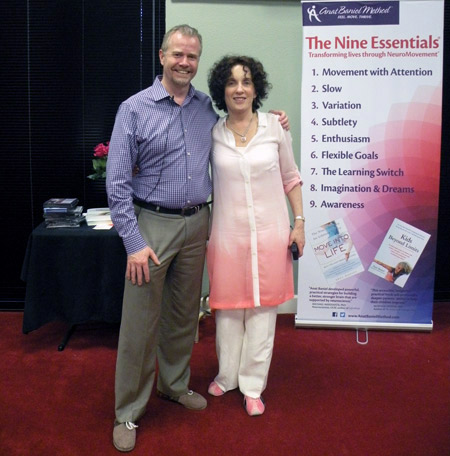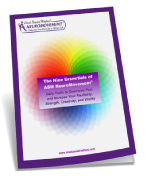Transforming Rehabilitation: A Neuroscience, NeuroMovement® Approach
Anat Baniel and Neil Sharp Plan for NeuroMovement® Training in Morocco
A few years ago while I was watching the news on CNN, there was a piece showing a wounded Iraq war veteran going through rehab. Among his different injuries was a massive injury to one of his legs. This strong, handsome young man was standing between two bars with a kind, loving therapist encouraging him to try and take another step. He garnered his courage, will power, and determination. And, with his face distorting into the expression of intense pain, while holding his breath, he took one more step.
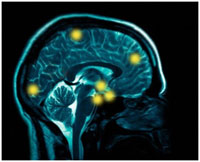 My heart broke. While everyone in this video segment was doing their best, with the best of intentions, by my understanding, what was done was using the ability of the brain to change itself in a powerful way. But rather than being a change in a positive way, it was driving the brain into great limitation and what I would label unnecessary negative change.
My heart broke. While everyone in this video segment was doing their best, with the best of intentions, by my understanding, what was done was using the ability of the brain to change itself in a powerful way. But rather than being a change in a positive way, it was driving the brain into great limitation and what I would label unnecessary negative change.
I’ll explain more a bit later.
Then, I had the great privilege to meet a wonderful man, a medical doctor who was head of all the doctors in a very large hospital and health provider network. I was invited to dinner with him—one of my students was one of the doctors working in the same organization. My student wanted us to have this meeting to discuss brain plasticity and transforming the approach to rehabilitation, based upon my understanding on current research, principles of brain change, and the specific, concrete techniques that Anat Baniel Method® (ABM) NeuroMovement® uses to take advantage of these principles.
We had a lovely time, and he was very interested in what I had to say. Towards the end of the meal, I wanted to give him an example of what I was talking about related to some of the patients his doctors were caring for. I focused on rehabilitation for stroke patients. What I told him is that the reason a stroke patient has the initial limitation of function after a stroke is due to the stroke. However, the reason that so many stroke patients are discharged from rehabilitation after 3 to 5 weeks (because there isn’t any more meaningful change that justifies them staying in rehab), is due to the intervention.
I further explained that when stroke patients stop improving, therapists and doctors assign this ceiling of improvement to the stroke but what it should be assigned to, is the intervention.
The way the intervention is typically done with traditional therapy ends up using the heightened plasticity of the brain post stroke* in such a way that it leads stroke survivors to quickly learn their limitations rather than learn new patterns to help them move beyond those limitations.
(*Recent research shows that immediately after a stroke, for approximately the first 4 weeks, the brain is exceptionally plastic. )
The NeuroMovement approach and techniques used in ABM do exactly the opposite. These techniques can seem counter-intuitive to what is done today, and changing people’s belief systems and what feels safe can be challenging. BUT, it is happening. More and more medical doctors are saying that rehab for stroke patients the way it is currently done is “a joke,” “not very useful,” or at times, “negative.” (Watch Dr. Krakauer’s TEDx Johns Hopkins University video.)
It is very important to understand that this is not about the therapists themselves. They are highly dedicated, highly skilled people who are often times helpful to stroke patients in certain ways. However, these recent discoveries in brain science have uncovered new, more effective options, so it is the standard of intervention that needs to change.
Enter Mohammed (Mo) Sbia, a Moroccan neuroscientist, who now lives and teaches in Utah, and is a friend of Dr. Michael Merzenich. Mo’s brother suffered a traumatic brain injury (TBI) due to a car accident. Morocco does not have a rehabilitation institution. They have therapists who are mostly trained in France. So, Mo paid for private rehab for his brother in France. Being a neuroscientist and watching what was done with his brother, Mo realized that current rehabilitation is very lacking.
So, Mo created a nonprofit organization with the intent of creating a neuroscience/ brain plasticity-based rehabilitation system in Morocco. He approached Dr. Merzenich to be a part of it, and together, they approached me to be the practical manifestation of this new approach.
Neil Sharp and I will be flying to Morocco to teach a group of therapists and medical doctors for three days. We will introduce them to the 9 Essentials, give them experiential movement lessons, show them some hands-on techniques, and work with actual patients.
Then, Dr. Merzenich will present the science and research in the field of brain plasticity relating it to what they have learned in the previous three days. And finally, Dr. Merzenich and I will do some work together where I will show the practical applications and he will discuss the theoretical aspects and answer questions. At least this is our vision at this time.
We are all doing this work pro bono. My only request was that this training be videotaped professionally so that we can offer it as an online course for professionals working with people who need rehabilitation. It’s not going to be limited to stroke, but it will be for any rehab, any age. One half-day of the training will be dedicated to our work with children.
This is a great honor, a huge opportunity, and a big adventure! Transforming rehabilitation is an enormous goal. So my approach to it is to have Flexible Goals :), Imagination & Dreams, Awareness, and the 10th Essential—LOVE—which has never been included in my description of the Essentials.
Wish us luck and send lots of good thoughts,
Anat and Neil
Additional Resources
Watch videos of Dr. Michael Merzenich and Anat Baniel discussing brain plasticity and their work.
Learn more about how NeuroMovement can help in stroke rehabilitation and recovery.

